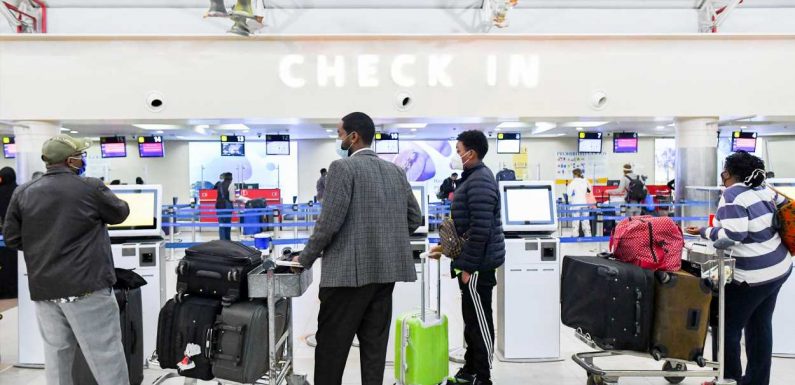
As summer approaches, the good signs for travel keep rolling in: The CDC says air travel is safe for fully vaccinated passengers; the TSA screened more than 1 million fliers for all except four days in March, and warm-weather U.S. destinations like Florida are seeing a spike in spring and summer bookings.
To be sure, such developments point to a promising resurgence for aviation, an industry that’s still grappling with losses of $118 billion during 2020. But along with the optimism and excitement among many travelers eager to hop on a plane, some also are wondering: What does the future hold for ticket prices?
In the short term, there’s good news on the horizon. According to data from the International Air Transport Association, an industry group that represents 290 airlines around the world, average airline ticket prices continue to reflect a 20 percent drop compared to before the crisis. And although prices over the summer might trend upward slightly, industry experts say consumers should be able to take advantage of lower prices for a while to come.
“Demand levels are at the moment lower than they used to be, which means that eventually drives the [ticket] costs lower as well,” says Bayram Annakov, founder and CEO of App in the Air, a travel tech platform for frequent fliers. “That’s why I think in the next six to nine months, until the end of 2021, we’ll see much lower ticket prices than what we used to have in 2019, for instance.”
How airlines price tickets is a convoluted process involving the principles of supply and demand, revenue management, market competition, and forecasting, just to name a few. One important piece of that puzzle is capacity: Throughout the pandemic, airlines have been forced to ground thousands of planes, cut routes, and fly half-full aircraft. Until passenger numbers increase closer to pre-crisis figures, which is also dependent on vaccine rollouts and restarting international travel, airlines remain highly motivated to fill those empty seats—and the best way to currently do that is with lower fares that appeal to leisure passengers.
“The general picture is that you’ve got airlines with very expensive assets in their aircraft,” says Brian Pearce, IATA’s chief economist. “Those are fixed costs. They need to fly them. And you’ve got lots of that capacity chasing a still relatively small number of passengers. Supply and demand means generally it’s going to be cheaper to travel.”
Another critical factor is the impact of business travel, which has fundamentally shifted over the course of the pandemic. With many companies enjoying massive cost savings from video conferencing, many experts believe that this sector of the industry will never fully return to pre-pandemic levels. (Bill Gates, for one, estimates that business travel will drop by a whopping 50 percent.)
For leisure travelers, that trend means both good news in the near future and, further down the road, not-quite-so-good news. On the plus side, airlines have had to abandon their traditional strategy of price discrimination as a way to cover their costs and generate revenue: identifying passengers willing to pay higher fares and charge them more than those willing to pay only low fares. In the past, one way airlines have done that is by targeting the business sector, whose travelers tend to finalize plans closer to their travel date than leisure travelers, often referred to in industry parlance as “price-sensitive,” who plan further ahead.
However, the pandemic has upended that strategy, as many more travelers book closer to their trip because of the myriad uncertainties caused by COVID-19. In fact, according to IATA data, 40 percent of current tickets are booked within the week of travel, compared to pre-crisis, when almost half of tickets were booked at least three weeks ahead of time.
At least for now, those new buying patterns mean leisure travelers may not be penalized by booking airfare closer to their travel date. “Traditional revenue management is not working at the moment, and it’s not clear when it’s going to come back,” Pearce says.
It’s also not clear when those business travelers and those lucrative long-haul international routes will be coming back full force. And that could spell trouble for leisure travelers in terms of both cost and choice, as airlines will need to either find a way to charge them more for their tickets or end routes that can’t be operated profitably.
There’s “no across the board number” on how much impact this may have on tickets, according to Mike Boyd, president of Boyd Group International, a Colorado-based aviation consulting firm. But, Boyd says, “we will see some reductions in capacity in markets that are primarily business-focused [and] that will tend to put pressure on fares.”
For now, though, eager travelers should be plenty optimistic about scoring a good deal on airfare for that long-awaited summer trip. Even the uptick in passenger demand shouldn’t be enough to offset the excess capacity that airlines are expected to see for the next few months, until widespread vaccine rollout begins to take effect.
So, as the industry continues to adapt to its new normal, a bit of traditional wisdom still applies: If you see an irresistible fare, grab it while you can.
We’re reporting on how COVID-19 impacts travel on a daily basis. Find our latest coronavirus coverage here, or visit our complete guide to COVID-19 and travel.
Source: Read Full Article









